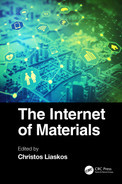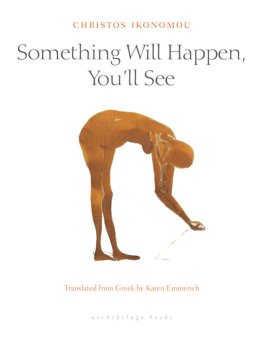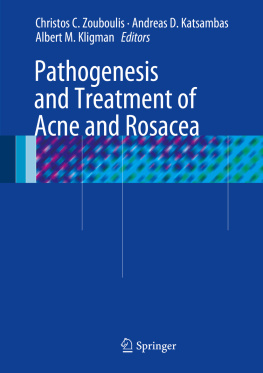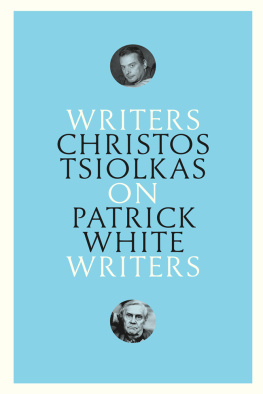Christos Liaskos - The Internet of Materials
Here you can read online Christos Liaskos - The Internet of Materials full text of the book (entire story) in english for free. Download pdf and epub, get meaning, cover and reviews about this ebook. year: 2020, publisher: CRC Press, genre: Home and family. Description of the work, (preface) as well as reviews are available. Best literature library LitArk.com created for fans of good reading and offers a wide selection of genres:
Romance novel
Science fiction
Adventure
Detective
Science
History
Home and family
Prose
Art
Politics
Computer
Non-fiction
Religion
Business
Children
Humor
Choose a favorite category and find really read worthwhile books. Enjoy immersion in the world of imagination, feel the emotions of the characters or learn something new for yourself, make an fascinating discovery.
- Book:The Internet of Materials
- Author:
- Publisher:CRC Press
- Genre:
- Year:2020
- Rating:3 / 5
- Favourites:Add to favourites
- Your mark:
- 60
- 1
- 2
- 3
- 4
- 5
The Internet of Materials: summary, description and annotation
We offer to read an annotation, description, summary or preface (depends on what the author of the book "The Internet of Materials" wrote himself). If you haven't found the necessary information about the book — write in the comments, we will try to find it.
The Internet of Materials — read online for free the complete book (whole text) full work
Below is the text of the book, divided by pages. System saving the place of the last page read, allows you to conveniently read the book "The Internet of Materials" online for free, without having to search again every time where you left off. Put a bookmark, and you can go to the page where you finished reading at any time.
Font size:
Interval:
Bookmark:
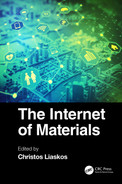
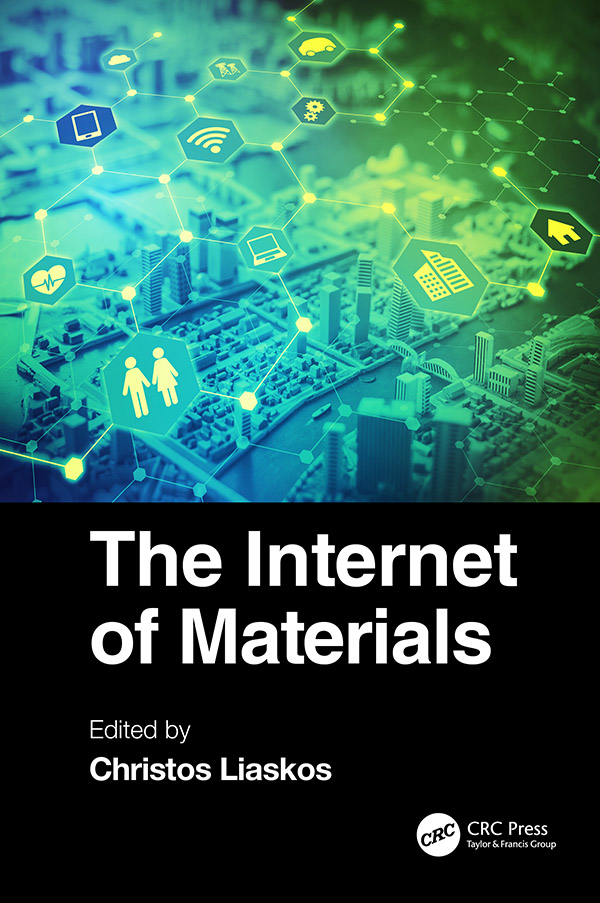
The Internet of
Materials
The Internet of
Materials
Edited by
Christos Liaskos

First edition published 2021
by CRC Press
6000 Broken Sound Parkway NW, Suite 300, Boca Raton, FL 33487-2742
and by CRC Press
2 Park Square, Milton Park, Abingdon, Oxon, OX14 4RN
2021 Taylor & Francis Group, LLC
CRC Press is an imprint of Taylor & Francis Group, LLC
Reasonable efforts have been made to publish reliable data and information, but the author and publisher cannot assume responsibility for the validity of all materials, or the consequences of their use. The authors and publishers have attempted to trace the copyright holders of all material reproduced in this publication and apologize to copyright holders if permission to publish in this form has not been obtained. If any copyright material has not been acknowledged please write and let us know so we may rectify in any future reprint.
Except as permitted under U.S. Copyright Law, no part of this book may be reprinted, reproduced, transmitted, or utilized in any form by any electronic, mechanical, or other means, now known, or hereafter invented, including photocopying, microfilming, and recording, or in any information storage, or retrieval system, without written permission from the publishers.
For permission to photocopy, or use material electronically from this work, access
Trademark notice: Product, or corporate names may be trademarks, or registered trademarks, and are used only for identification and explanation without intent to infringe.
ISBN: 978-0-367-45738-9 (hbk)
ISBN: 978-1-003-04380-5 (ebk)
Typeset in CMR
by Nova Techset Private Limited, Bengaluru & Chennai, India
CONTENTS
Christos Liaskos, Ageliki Tsioliaridou, Sotiris Ioannidis
Foundation for Research and Technology Hellas, 71110, Heraklion, Crete, Greece
Over a long course of the last six years, a large group of scientists had the pleasure of exploring an exciting direction and perhaps a programmers sci-fi dream: to talk to materials with software commands, and tune their physical properties accordingly. In the last three years, with the support of the European Union and the Future and Emerging Technologies program of Horizon 2020 and an excellent consortium, this concept was advanced significantly.
Writing a book about this new concept perhaps preceded any other of our joint intentions, and has been in our minds from the start. However, in this small foreword, a big thanks is due to the people that supported this effort from its very early stage, back in 2014:
Prof. Andreas Pitsillides from the University of Cyprus and Prof. Ian F. Akyildiz from Georgia Tech. We feel that without their continuous support and inspiration, this effort would have certainly remained fruitless, at least from our side co-authoring this short note.
Finally, while this is not a project-specific book, a big thanks to all VISORSURF project consortium members and extended collaborators in general [], those who made it in contributing invited chapters to this book, those who could not make it due to other obligations, those who stayed until the end, and those who had to move on to their next professional step. Instead of listing and sorting them in any unfair way, we encourage the readers to study their highly interesting publications, contributed to the community both within and without the VISORSURF project scope.
Christos Liaskos, Ageliki Tsioliaridou, Sotiris Ioannidis
Foundation for Research and Technology Hellas, 71110, Heraklion, Crete, Greece
Andreas Pitsillides, Ian Fuat Akyildiz
Computer Science Department, University of Cyprus
What if the laws of electromagnetism could be customized, rather than being simply adhered to? In recent years, a novel research direction has emerged to explore this direction in the context of wireless communications, exhibiting paradigm-shifting potential, especially in the much anticipated extremely high frequency regime. The present book explores this new direction at an educational level. We hope that the material, though covering multiple disciplines, is fit for newcomers in the field.
The book revolves around artificial materials which can sense electromagnetic waves impinging upon them and alter these waves in ways dictated by software. These materials, such as the recently proposed HyperSurfaces [].
A core component of HyperSurfaces are the metasurfaces, i.e., planar, artificial structures, which have recently enabled the realization of novel objects with engineered and even unnatural electromagnetic functionalities [].
The derived practical benefits are highly promising. As shown in , interconnected HyperSurfaces deployed within a space can mitigate previously unsurmountable, degenerative factors in wireless propagationnamely, the path loss, the multi-path fading, and the Doppler shift. This readily allows for lower-power transmissions, which favor the battery lifetime of the wireless devices. Moreover, the decreased scattering reduces cross-device interference, allowing an increased number of mobile users to co-exist in the same space, without degrading their performance. Additionally, the traveling wave reaches the receiver via well-defined paths rather than via multiple echoes, allowing for increased data transmission rates and high-quality coverage even at previously hidden areas. From another aspect, this separation of user devices can target increased privacy. Waves carrying sensitive data can be tuned to avoid all other devices apart from the intended recipient, hindering eavesdropping. These interesting environmental behaviors and more can be expressed in software in the form of combinable and reusable modules. Thus, communication system designers and operators are enabled to easily and jointly optimize the complete data delivery process, including the wireless environment, supplementing the customizable wireless device behavior, and, furthermore, reducing the complexity of the device design.
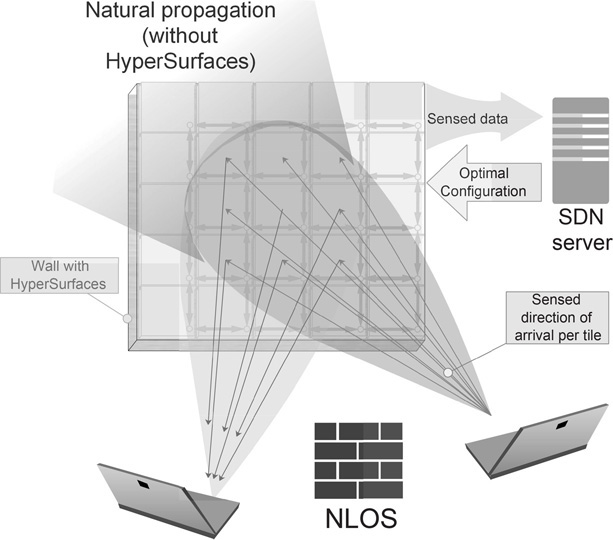
HyperSurfaces stand on the verge of several scientific disciplines, including Materials Physics, Electrical Engineering, Manufacturing of Electronics, Communications, and Computer Science. This book aspires to provide a basic inter-disciplinary scientific background for newcomers, to delve into the resulting new research direction. To this end, the chapter structure is as follows:
provides the foundational concepts of electromagnetism that permeate and describe the operation of metasurfaces and metamaterials.
models the metasurface foundations from the Computer Science aspect, introducing novel software classes that enable the transparent integration of HyperSurfaces into the Internet of Things ecosystem.
details the network protocols that interconnect the HyperSurfaces and their components to the external world, providing access to their functionalities at the network level.
details prospectful Internet of Things-compliant approaches for inter-networking metamaterials. Existing solutions in the IoT market are surveyed, from the aspects of hardware, software, and standards.
Font size:
Interval:
Bookmark:
Similar books «The Internet of Materials»
Look at similar books to The Internet of Materials. We have selected literature similar in name and meaning in the hope of providing readers with more options to find new, interesting, not yet read works.
Discussion, reviews of the book The Internet of Materials and just readers' own opinions. Leave your comments, write what you think about the work, its meaning or the main characters. Specify what exactly you liked and what you didn't like, and why you think so.

